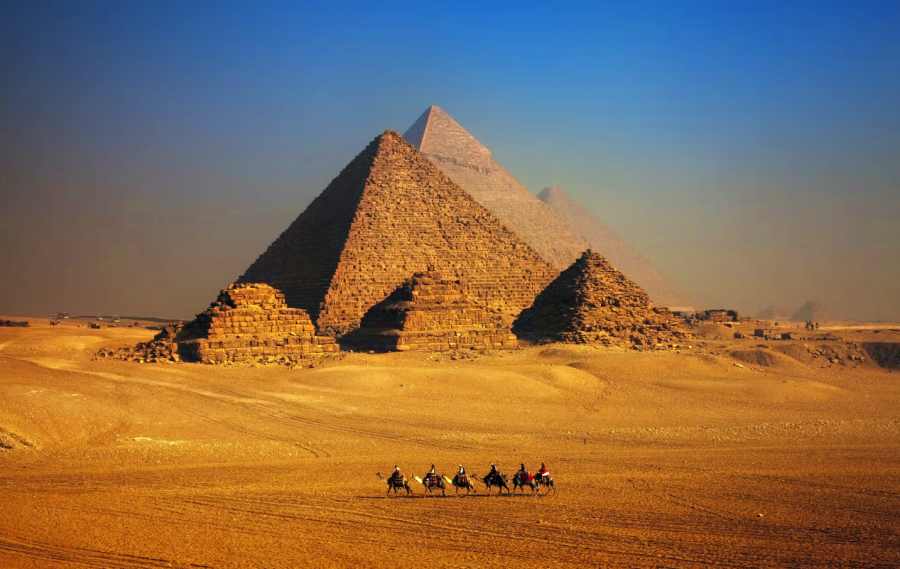Mon 20 May 2024:
Scientists think they are closer to solving the mystery of the construction of ancient Egypt’s pyramids, including the Giza pyramid complex that was constructed more than 4,000 years ago.
The 40-mile-long river branch, which ran by the iconic Giza pyramid complex among other wonders, was hidden under desert and farmland for millennia, according to a study revealing the find on Thursday.
The existence of the river would explain why the 31 pyramids were built in a chain along a now inhospitable desert strip in the Nile Valley between 4,700 and 3,700 years ago.
The strip near the ancient Egyptian capital of Memphis includes the Great Pyramid of Giza — the only surviving structure of the seven wonders of the ancient world — as well as the Khafre, Cheops and Mykerinos pyramids.
Archaeologists had long thought that ancient Egyptians must have used a nearby waterway to move the giant materials used to build the pyramids.
Researchers from the University of North Carolina Wilmington used radar satellite imagery, geophysical data and deep soil coring to map the hidden river branch.
The team named the branch “Ahramat,” which means pyramids in Arabic, and said it was about 64 kilometers (39 miles) long and between 200 meters – 700 meters (656 feet -2,296 feet) wide.
“Many of the pyramids, dating to the Old and Middle Kingdoms, have causeways that lead to the branch and terminate with Valley Temples which may have acted as river harbors along it in the past,” the researchers said in their paper.
“We suggest that the Ahramat Branch played a role in the monuments’ construction and that it was simultaneously active and used as a transportation waterway for workmen and building materials to the pyramids’ sites,” they said.
The Giza pyramids stood on a plateau roughly a kilometer from the banks of the river.
Many of the pyramids had a “ceremonial raised walkway” which ran alongside the river before ending at the Valley Temples which served as harbors, Ghoneim said.
This indicates that the river played “a key role in the transportation of the enormous building materials and workmen needed for the pyramid’s construction,” she added.
Exactly how ancient Egyptians managed to build such huge and long-standing structures has been one of history’s great mysteries.
These heavy materials, most of which were from the south, “would have been much easier to float down the river” than transport over land, study co-author Suzanne Onstine of the University of Memphis told AFP.
The banks of the rivers could have been where the funeral entourages of pharaohs were received before their bodies were moved to their “final burial place within the pyramid,” she suggested.
The river may also indicate why the pyramids were built in different spots.
“The water’s course and its volume changed over time, so fourth dynasty kings had to make different choices than 12th dynasty kings,” she said.
“The discovery reminded me about the intimate connection between geography, climate, environment and human behavior.”
The study comes on the heels of recent research projects focusing on the iconic pyramids.
SOURCE: INDEPENDENT PRESS AND NEWS AGENCIES
______________________________________________________________
FOLLOW INDEPENDENT PRESS:
WhatsApp CHANNEL
https://whatsapp.com/channel/0029VaAtNxX8fewmiFmN7N22
![]()
TWITTER (CLICK HERE)
https://twitter.com/IpIndependent
FACEBOOK (CLICK HERE)
https://web.facebook.com/ipindependent
YOUTUBE (CLICK HERE)
https://www.youtube.com/@ipindependent
Think your friends would be interested? Share this story!





